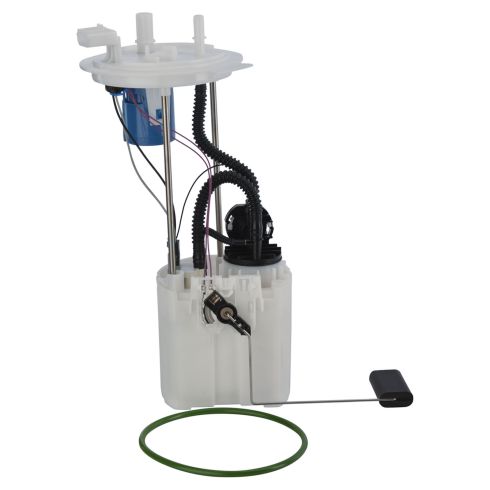TR Conn
Member
- Joined
- Dec 13, 2006
- Location
- Long Beach, Ca
B20 Fuel Injection Questions
Updated again!
As I said below in one of the posts, I was going to finish up the project and see how well or horribly it would work.
Well, the data is in and it's not good!
As predicted, the fuel distribution is compromised by the firing order.

Cylinders 1 & 4 look about right, but 2 & 3 are running really rich.
It seems pretty obvious to me that this is an unworkable method.
But, damn it, I'm tenacious, I have two more possible methods up my sleeve. I have a funky home made manifold that attaches to the stock intake manifold that mounts a Ford Motorcraft carb. The carb is crap, so I opened up the annular rings and mounted two injectors in the carb. This basically makes it a throttle body set up Stay tuned and I'll see how that works out.
Also in the planning stages is something like the set up I have now but it will mount between the manifold and the head with an injector bung for each cylinder. Probably where I should have started, but I'm just doing all of this for fun and a not too expensive education.
He that is taught only by himself has a fool for a master.
H.S. Thompson
Update!
I've done more research on this project and have found a couple of things that at=re of interest
Fuel pump/sump etc
Edelbrock kit that has everything needed
https://www.google.com/search?q=Ede...me&ie=UTF-8#kpvalbx=_ukCwXpHxFNL7-gTSiraQAg36
A very good article on siamese port injection:
https://www.starchak.ca/efi/siamese.htm
I'm gearing up to install Megasquirt in my B20 swapped '58 Duett.
1. On a previous project I bought one of the super cheap fuel pressure regulators, of course it crapped out within a week. They sent me a replacement that lasted about 2 hours. In both cases the diaphragm was the problem. The FPR looks like a direct rip off of the Aeromotive FPR (13129 or similar).
The question - will the Aeromotive rebuild kit fit the cheepo-Chinabay part?
2. On the Duett there is nowhere to install a swirl tank. The fuel tank is quite deep and I am going to use the stock pick-up.
The question – Does the stock mechanical pump have enough capacity to serve as a pre-pump for the fuel injection pump?
3. Tool wise, I'm going to use plug connectors which have pins that require crimping in two places, the bare end and on the insulated part of the wire for security.
The question – Where is this type of crimper available?
I'm doing this project with the requirement that it can be reverted back to carbs easily and without modifications that can't be undone.
Thanks for your answers, expertise and suggestions
Stay healthy!
TR Conn
Updated again!
As I said below in one of the posts, I was going to finish up the project and see how well or horribly it would work.
Well, the data is in and it's not good!
As predicted, the fuel distribution is compromised by the firing order.

Cylinders 1 & 4 look about right, but 2 & 3 are running really rich.
It seems pretty obvious to me that this is an unworkable method.
But, damn it, I'm tenacious, I have two more possible methods up my sleeve. I have a funky home made manifold that attaches to the stock intake manifold that mounts a Ford Motorcraft carb. The carb is crap, so I opened up the annular rings and mounted two injectors in the carb. This basically makes it a throttle body set up Stay tuned and I'll see how that works out.
Also in the planning stages is something like the set up I have now but it will mount between the manifold and the head with an injector bung for each cylinder. Probably where I should have started, but I'm just doing all of this for fun and a not too expensive education.
He that is taught only by himself has a fool for a master.
H.S. Thompson
Update!
I've done more research on this project and have found a couple of things that at=re of interest
Fuel pump/sump etc
Edelbrock kit that has everything needed
https://www.google.com/search?q=Ede...me&ie=UTF-8#kpvalbx=_ukCwXpHxFNL7-gTSiraQAg36
A very good article on siamese port injection:
https://www.starchak.ca/efi/siamese.htm
I'm gearing up to install Megasquirt in my B20 swapped '58 Duett.
1. On a previous project I bought one of the super cheap fuel pressure regulators, of course it crapped out within a week. They sent me a replacement that lasted about 2 hours. In both cases the diaphragm was the problem. The FPR looks like a direct rip off of the Aeromotive FPR (13129 or similar).
The question - will the Aeromotive rebuild kit fit the cheepo-Chinabay part?
2. On the Duett there is nowhere to install a swirl tank. The fuel tank is quite deep and I am going to use the stock pick-up.
The question – Does the stock mechanical pump have enough capacity to serve as a pre-pump for the fuel injection pump?
3. Tool wise, I'm going to use plug connectors which have pins that require crimping in two places, the bare end and on the insulated part of the wire for security.
The question – Where is this type of crimper available?
I'm doing this project with the requirement that it can be reverted back to carbs easily and without modifications that can't be undone.
Thanks for your answers, expertise and suggestions
Stay healthy!
TR Conn
Last edited:







